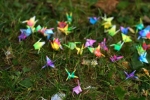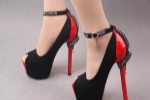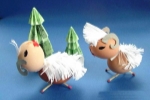
书信类英语作文万能句型【一】
是写信人对收信人的称呼用语。位置在信内地址下方一、二行的地方,从该行的顶格写起,在称呼后面一般用逗号(英国式),也可以用冒号(美国式)。
(1)写给亲人、亲戚和关系密切的朋友时,用dear或my dear再加上表示亲属关系的称呼或直称其名(这里指名字,不是姓氏)。例如:my dear father,dear tom等。
(2)写给公务上的信函用dear madam,dear sir或gentleman(gentlemen)。注意:dear纯属公务上往来的客气形式。gentlemen总是以复数形式出现,前不加dear,是dear sir的复数形式。
(3)写给收信人的信,也可用头衔、职位、职称、学位等再加姓氏或姓氏和名字。例如:dear prof. tim scales, dear dr.john smith。
书信类英语作文万能句型【二】
1:Peoples views onvary from person to person. Some hold thatHowever, others believe that
2:People may have different opinions on
3:Attitudes towards vary from person to person.==Different people hold different attitudes towards
4:There are different opinions among people as to
书信类英语作文万能句型【三】
(一)改写一般疑问句:
(1)原句中有be动词的,将be动词提前,其他顺序不变。
例如:Thisisacat.变为Isthisacat?
(2)原句中有情态动词的(can/may/shall/would)将情态动词提前,其他顺序不变。例如:Hewouldlikeapie.变为Wouldhelikeapie?
(3)原句中是一般动词的,在句首加助动词do或dose(用于主语是第三人称动词单数的句子),其他顺序不变。例如:Iplaytheguitar.变为Doyouplaytheguitar.
(4)原句中的some变any。
注:以情态动词开头的一般疑问句,并且要求对方做肯定回答的`some不变。
(5)原句中的第一人称改为第二人称。例如:Iamanurse.变为Areyouanurse?
(6)以dose开头的一般疑问句,原来动词的第三人称单数形式要变回原形。例如:Hereadsastorybook.变为Dosehereadastorybook?
(二)改写否定句:
(1)原句中有be动词的,直接在be动词后面加not。例如:Itisadog.→It’snotadog./Itisn’tadog.
(2)原句中有情态动词的,直接在情态动词后加not。
例如:Iwouldlikeahotdog.→Iwouldnotlikeahotdog.
(3)原句中是一般动词的,在一般动词前加don’t或doesn’t(用于主语是第三人称单数的句子),doesn’t后面用原型。例如:Iseethreehamburgers.→Idon’tseethreehamburgers.
原句中的some变any例如:Ihavesomebreadan
dmilk.→Idon’thaveanybreadandmilk.
(4)以let开头的祈使句,如果是letus或letme,直接在其后加not;如果let后面其他人称代词宾格(you、him、her、them、it)就在let后面加助动词don’t。例如:Letusgotothepark.→Letusnotgotothepark.再如:Letthemdohomework.→Don’tletthemdohomework.
(三)对划线部分提问:
对划线部分提问,就是先把一个陈述句的划线部分去掉,然后变为一个特殊疑问句:一是特殊疑问句+一般疑问句;
二是特殊疑问句+陈述句(对主语或主语的定语提问,therebe结构除外)
⑴划线部分是人,用who提问。
⑴划线部分是主语,用who提问,who后面的动词要用第三人称单数形式。如:Whois;Wholikes;Whohas?
方法:who+原句的剩余部分
例如:①HelenandMikearelisteningtomusic.
→Whoislisteningtomusic?
②Ihavesomemodelplanes.
→Whohasanymodelplanes?
⑵划线部分是表语,用who提问。
方法:Who+剩余部分的一般疑问句形式
⑵划线部分是事或者物,用what提问。
方法:what+剩余部分的一般疑问句形式。
注:如果原句是therebe句型,直接用What’s+地点状语来提问。例如:①Wewouldliketobuysomethingsforaparty.
→Whatwouldyouliketobuyforaparty?
②Therearealotofcakesintheplate.
→Whatisintheplate?
⑶划线部分是物主代词或名词所有格,用Whose提问。
方法:⑴划线部分是主语的定语时,Whose+剩余部分
例如:Ourclassroomisbright.
→Whoseclassroomisbright?
⑵划线部分是表语或表语的定语时,Whose+剩余部分的一般疑问句形式例如:①ThewomanisSuYang’steacher.
→Whoseteacheristhewoman?
注:对某部分的定语提问,被修饰的部分跟随特殊疑问句往前提②ThispurseisYangLing’s.
→Whosepurseisthis?
⑷划线部分是地点,用where提问。
方法:where+剩余部分的一般疑问句形式
例如:TheyarehamingaMathslessonintheclassroom..
→WherearetheyhavingaMathslesson?
⑸划线部分是“多少”,用howmany或howmuch提问。
方法:⑴句中是可数名词的用Howmany+剩余部分的一般疑问句形式例如:Therearefifteentreesintheplayground.
→Howmanytreesarethereintheplayground?
⑵句中是不可数名词的用Howmuch+剩余部分的一般疑问句形式例如:Ihaveaglassofjuiceforbreakfast.
→Howmuchjuicedoyouhaveforbreakfast?
⑹划线部分是时间,用when或whattime(具体的几时几分)提问。方法:⑴when+剩余部分的一般疑问句形式
例如:SuYangandSuHaiareathomeonSundaymorning.
→WhenareSuYangandSuHaiathome?
⑵问具体的时间直接用Whattimeisit?或What’sthetime?问
例如:It’sthreeforty-five.
→Whattimeisit?或What’sthetime?
书信类英语作文万能句型【四】
考辅P42
1.IgaveTomthebook.//
2.Heboughthismothersomeflowers.//
3.Thebridgewasbuiltbyworkerslastyear.//
4.Wehavetofinishtheworktoday.//5.Hewilldohishomeworktomorrow.//
6.Wecleantheroomseveryday.//7.Thewriterspent3yearsonthebook.//
8.Itisabookwithalotofbeautifulpictures.//
9.Thebooksoldverywellduringthefirstweek.//firstweek.
10.Marywastheonlyoneintheoffice.//
11.Shefinishedherworkat10o’clock.//Shedidn’12.Shehadtotakeataxihomebecauseitwastoolate.
13.LizaandMikearrivedattheGreatWallintwohours.
14.Theywerehappytogettothetop.//
15.TheyenjoyedthemselvesontheGreatWall.//
16.ThepostmansentSusanandTommyapaperbox.
17.Theyopeneditandfoundapresentfromtheirfriend.
18.Theybothlikedthepresentandfeltveryhappy.
19.Alicedidn’tfeelwelltoday,soshewenttothehospital.
20.Thedoctoraskedhersomequestions.//
21.Thedoctordidn’tgiveheranymedicineintheend.
(全真1)
1.ThecapitalAirporthasbeeninusefor20years.//
2.ThecapitalAirportisthelargestoneinChina.//
3.Ihavenevertakenaplane.MyfriendLiPing,either.//
(全真2)
1.Fathergave$20formetobuysomebooks.//
2.IwasexcitedwhenIsawsomanygoodbooksinthebookstore.
3.ButsomebookswouldcostmorethanIhave.//
ButIdidn’//(全真3)
1.ManyChinesefriendswenttotheparty.2.Tonywasgivenalotofpresentsbyhisfriends.//Tony’
3.SeeinghisChineseteacheratthepartymadeTonyveryhappy.//(全真4)
1.Iwanttoeatsomething.//2.Therefrigeratorisempty.//3.Bobspentfifteenyuanonthehamburger.///(全真5)
1.Mr.Wangdoesn’tworkinthatfactoryanylonger.//
2.Mr.Wanglefthomeearlierinordertocatchthebus.3.Mr.Wangfindsitnoteasytogetalongwiththatyoungguy.//(专家1)
1.Manypeoplewentshoppingyesterday.
2.Janespent4hourstobuyNewyeargifts.//
3.Shewassotiredthatshecouldn’twalkanylonger.//
(专家2)
1.Myfriendssaidtome,“Areyoufree?”
2.Shewantedmetogoshoppingwithher.
3.Shethinksitapleasuretogoshoppingwithafriend.
书信类英语作文万能句型【五】
在正文下面的一、二行处,从信纸的中间偏右处开始,第一个词开头要大写,句末用逗号。不同的对象,结束语的写法也不同。
(1)写给家人、亲戚,用your loving grandfather,lovingly yours,lovingly等;
(2)写给熟人、朋友,用yours cordially,yours affectionately等;
(3)写业务信函用truely yours(yours truely),faithfully yours(yours faithfully)等;
(4)对上级、长辈用yours obediently(obediently yours),yours respectfully(respectfully yours)等。
书信类英语作文万能句型【六】
一、英文书信的结构
第一节英文书信的结构
英文书信一般由以下六部分组成:信头、信内地址、称呼、正文、结尾、签名。
1.信头(Heading)
信头是指发信人的地址和日期,通常写在第一页的右上角。行首可以齐头写,也可以逐行缩进写。地址的书写顺序由小到大:门牌号、街道、城市、省(州)、邮编、国名,最后写发信日期。私人信件一般只写寄信日期即可。例如:
123 Tianhe Road
Tianhe District
Guangzhou 510620
Guangdong Province
P. R. C.
Jan 8,20xx
2.信内地址(Inside Address)
信内地址要写收信人的姓名和地址。在公务信件中要写明这一项,在私人信件中,这一项常常省略。该项写在写信日期下一行的左上角,格式与寄信人地址一样。
3.称呼(Salutation)
称呼是对收信人的`称谓,应与左边线对齐,写在收信人姓名、地址下面1—2行处。在称呼后,英国人常用逗号,美国人则常用冒号。在私人信件中可直呼收信人的名字,但公务信件中一定要写收信人的姓。大部分信件在称呼前加“Dear”。如:
Dear Professor/Prof。 Bergen:
Dear Dr。 Johnson,
对不相识的人可按性别称呼:
Dear Sir:或Dear Madam:Dear Ladies。
如果不知收信人的性别则可用Dear Sir or Madam:
4.正文(Body of Letter)
正文是书信的主体。与中文信件不同的是,英文书信的正文的开头不是先写一些问候语,再阐明写信的目的,而是直接说明写信人的身份及写信的目的,然后提出写信人的情况、想法或要求,并加以必要的解释或说明。英文书信陈述目的时,应该直截了当,意思明确,层次清楚,言简意赅。
书信正文的第一句话或第一段,通常被称为起首语。一般说来,人们习惯用一些客套的写法作为书信正文的起始,即先将对方来信的日期、主题加以简单描述,以便使对方一看便知该信是回答哪一封信的。如果是第一次给别人写信,也可用开头语作必要的自我介绍,并表明自己写信的主要目的。
5.结尾礼词(Complimentary Close)
公务信件的结尾礼词包含两部分:发信人的结尾套语与署名。结
尾套语写在签名上面一行,第一个字母要大写,套语结尾后面要加逗号。在公务信件中,发信人常用的结尾套语有:
Yours truly,Yours sincerely,Respectfully yours,Cordially yours,Yours cordially等。
私人信件中,发信人常用的结尾套语有:
Sincerely yours,Lovely yours,Your lovely,Your loving son/daughter等。
6. 签名(Signature)
写信人的签名常位于结尾礼词正下方一二行。除非是给很熟悉的人写信,签名一般须写出全名。签名常常较潦草,不易辨认,因此在签名的正下方须打印出全名。
第二节书信作文的出题形式和写作要领
1990年到20xx年1月之间的四级考试作文题中,书信作文共出现两次(20xx年6月和20xx年1月)。下面,我们先来看看20xx年6月四级考试的作文题:
Directions:For this part,you are allowed thirty minutes to write a letter。 Suppose you are Zhang Ying。 Write a letter to Xiao Wang,a schoolmate of yours who is going to visit you during the week—long holiday。 You should write at least 120 words according to the suggestion given below in Chinese:
1.表示欢迎
2.提出对度假安排的建议
3.提醒应注意的事项
A Letter to a Schoolmate
June 23,20xx
Dear Xiao Wang,
__________________________________
__________________________________
__________________________________.
Yours,
Zhang Ying
从上面的例子可见,书信作文不仅给出正文部分的内容的提纲,而且还给出书信各部分的结构的框架。也就是说,我们只要考虑如何表达提纲部分的内容,而不用考虑书信的结构。
在写书信作文时,首先要把书信正文的提纲内容细化,扩展成更细的英文提纲,然后用简洁、明了、礼貌、正确和得体的语言表达出细化了的提纲内容。例如前面的那封信就可以列出下面的提纲:Topic:A Letter to a SchoolmateQuestion:What are the holiday arrangements and points for attention?
Outline:
I.Extending my welcome
II.Holiday schedule
1.1st day – campus
2. 2nd day – the art gallery & music hall
3. 3rd day – mountain climbing4。 next 3 days – other places of interest(Swan Cave,Golden Lake?)
4. Last day – departure
III.Points for attention
1.Train number & time of arrival
2. Sunglasses
IV. Looking forward to seeing you。
1.Conclusion
范文:
A Letter to A Schoolmate
June 23,20xx
Dear Xiao Wang,
I’m very glad to learn that you’re going to visit me during the week—long holiday.My parents will also be happy to see you again.I am sure you will enjoy every minute here.
I have arranged our schedule for the holiday as follows.On the first day you arrive,I’ll show you around our campus. On the second day,we’ll visit the art gallery and the music hall. Next day,we’ll climb a hill in the northeastern part of the city.On the top of the hill,we can have a wonderful bird’s eye view of the city. During the next three days,we’ll make some short trips to some places of interest.
Yours,
Zhang Ying
书信类英语作文万能句型【七】
一封信写完了,突然又想起遗漏的事情,这时用p.s.表示,再写上遗漏的话即可,要长话短说。通常在信末签名下面几行的左方,应于正文齐头。
注意:在正式的信函中,应避免使用附言。

















